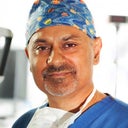A Mini Facelift with SMAS tightening can usually be an option on most realistic patients anytime after the age of 35-40. It really depends on your anatomy and genetics. It is best to talk to your surgeon because everybody has different techniques and recovery time is usually based on a number of factors. If we are just talking about a short scar facelift, this can typically be done in the office under local anesthesia. Usually there are no drains, no outside stitches, and patients can go out in public the same day, although I usually recommend they low for the first couple days. Most of the initial swelling is from the numbing medicine and your body absorbs it within the first 4-6 hours. Obviously the body heals with swelling and inflammation and usually that maxes out at two days and then starts getting better. Most of these patients take no pain medicine and usually feel very comfortable going out in public within a few days. I usually call my patients the night of surgery and check on them the next day. If everything is fine the next day, I then let them shower and they do not need a dressing over their incisions. They can usually start using make up after a few days. At the two week check up, I usually have people start working out and then after six weeks they can do whatever they want. I routinely tell people to take a few days to a week off work and to hide out but some people are very nervous especially celebrities and I usually tell them to hide out for two weeks. As with any scar on the human body, initially scars are red, hard and raised and it typically takes six months to a year for them to become a soft thin white line. Additionally with recovery, there're many things we do to expedite healing such as nerve blocks during surgery, oral supplements, skin care and scar therapy recommendations, lymphatic massage sessions that are included in our pricing.I strongly feel that it's very important to have an honest conversation with your surgeon about your particular situation, lifestyle, work environment and specifically which procedures you're having done so that you both have the most honest answer about your recovery and are realistic with expectations and results.Surgery is not for everyone. In today's day and age, there are many nonsurgical options to consider although surgery usually gets the most improvement specifically of the jowls.I would recommend that you see a board-certified plastic surgeon in your area that is a member of both ASPS & ASAPS and performs a lot of facelifts but also offers all the nonsurgical options such as injectables and laser treatments. Go over your concerns with them and make sure above all, you walk out of there with several options and an idea of the pros and cons to each of them as well as realistic expectations. I hope this helps and wish you all the best in your surgery and event. If it does, please take a moment to up vote this answer on the “respond” button on the top right.









